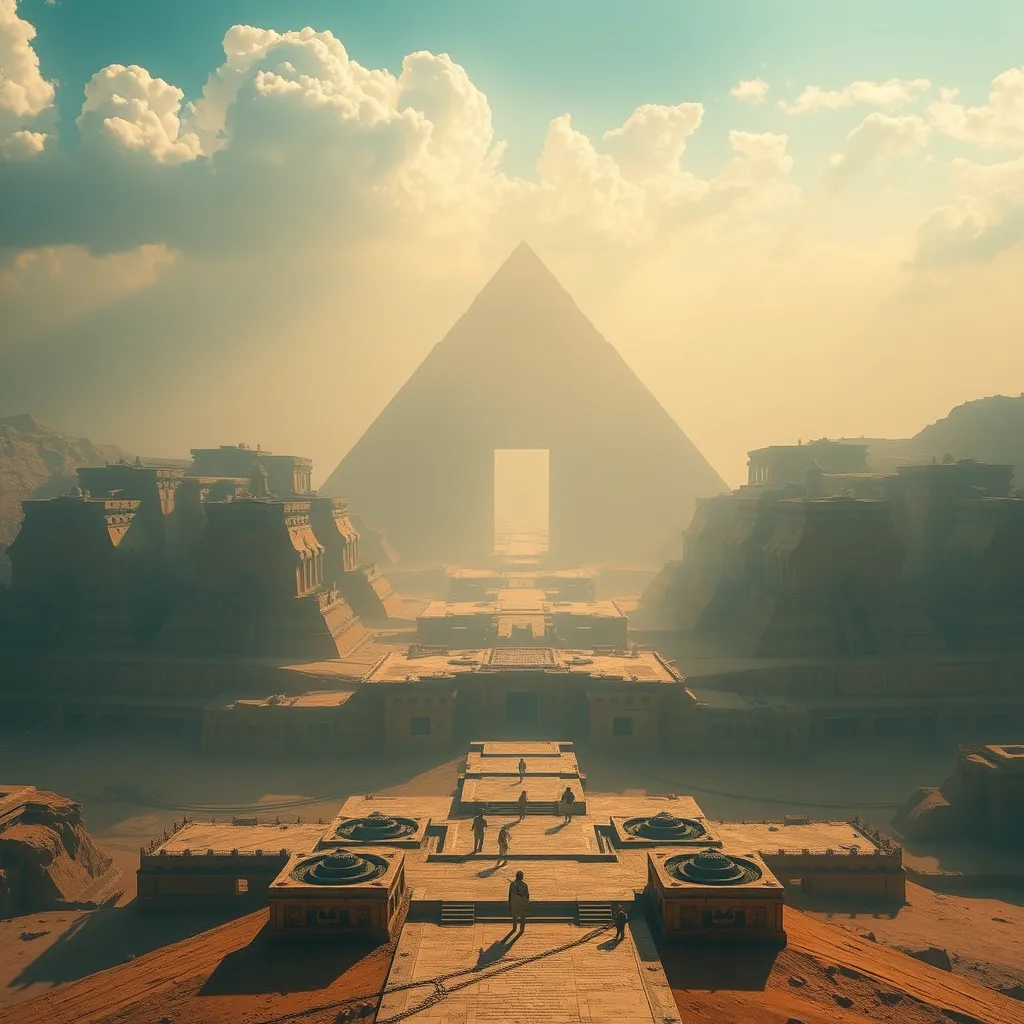The Duat: A Journey to the Heart of Eternity
I. Introduction to the Duat
The Duat, a term that resonates deeply within the realm of ancient Egyptian mythology, signifies the journey to the afterlife, a concept that held immense significance for the Egyptians. This mystical realm was more than just a destination; it was a complex landscape filled with trials, deities, and the promise of eternity.
In ancient Egyptian belief, the afterlife was not merely an extension of life on earth but a transformative experience that determined one’s fate for eternity. The Duat was viewed as a necessary passage where the soul would undergo trials before reaching the blissful fields of the afterlife, known as the Field of Reeds.
This article aims to explore the intricacies of the Duat, shedding light on its origins, geography, deities, and the perilous journey that souls would undertake to reach their final resting place.
II. The Origins of the Duat
The concept of the Duat evolved over centuries, influenced by changing beliefs and practices surrounding death and the afterlife in ancient Egypt. Initially, the Duat was a shadowy realm that reflected the Egyptians’ fears and uncertainties regarding death. Over time, it became more defined, thanks in part to significant religious texts.
Key texts such as the Book of the Dead and the Pyramid Texts provided insight into the Duat’s nature and the journey through it. These texts served as guides for the deceased, containing spells and instructions aimed at ensuring a safe passage through the afterlife.
Symbolism associated with the Duat is rich and varied, often representing the duality of existence—life and death, chaos and order. It was a place where the dead confronted their past actions and sought redemption.
III. The Geography of the Duat
The Duat is often described as a vast and varied realm, populated with numerous landscapes that reflect the mysteries of death. This realm included:
- Rivers: Flowing waters that represented the passage of time and the journey of the soul.
- Fields: Fertile lands symbolizing rebirth and regeneration, akin to the Field of Reeds.
- Mountains: Great heights that souls must ascend, representing the challenges they must overcome.
One of the most significant aspects of the Duat was the concept of the Twelve Hours of Night. Each hour held distinct challenges, tests, and encounters that the deceased had to navigate. This cyclical journey through the dark hours symbolized the soul’s transformation and the trials it faced before reaching eternal peace.
IV. Deities of the Duat
The Duat was populated by numerous deities who played crucial roles in guiding and protecting the souls of the deceased. Key figures included:
- Osiris: The god of the afterlife and resurrection, Osiris presided over the Duat, offering judgment and the promise of renewal.
- Anubis: Known as the god of mummification and the protector of graves, Anubis guided souls through the Duat and ensured their safe passage.
- Ma’at: The embodiment of truth and justice, Ma’at was essential in the judgment process, ensuring that the deceased’s heart was weighed against her feather.
The presence of these divine figures underscored the belief in the need for divine guidance and protection during the perilous journey through the afterlife.
V. The Journey Through the Duat
The journey through the Duat was a daunting process, where the soul faced numerous stages and challenges after death. The stages included:
- Crossing the threshold into the Duat, where the soul was met by Anubis.
- Navigating treacherous landscapes filled with monsters and deceptive spirits.
- Engaging in trials that tested the soul’s worthiness and adherence to Ma’at.
Throughout this journey, the deceased relied heavily on spells and rituals, as outlined in the Book of the Dead. These spells were recited to invoke protection from deities, ward off malevolent forces, and ensure a successful navigation through the Duat.
VI. The Judgment of the Soul
One of the most critical moments in the journey through the Duat was the Weighing of the Heart ceremony. In this ritual, the heart of the deceased was weighed against the feather of Ma’at:
- If the heart was lighter than the feather, the soul was deemed pure and worthy of eternal life in the Field of Reeds.
- If the heart was heavier, it signified a life filled with wrongdoing, leading to annihilation and the soul being devoured by the monstrous Ammit.
This judgment process highlighted the importance of one’s actions during life and the concept of accountability, reflecting the moral tenets that the ancient Egyptians held dear.
VII. Symbolism and Cultural Impact
The Duat’s influence extended beyond religious texts, permeating various aspects of ancient Egyptian culture. Its symbolism can be seen in:
- Art: Depictions of the Duat and its deities adorned tombs and temples, illustrating the journey of the deceased.
- Literature: Stories and hymns celebrated the adventures of gods and the souls’ passage through the Duat.
- Architecture: The design of tombs and pyramids reflected the Egyptians’ beliefs about the afterlife and the Duat.
The Duat’s legacy continues to resonate in modern interpretations of the afterlife, drawing parallels with concepts found in various cultures, such as the Greek Hades or the Christian notion of Heaven and Hell.
VIII. Conclusion
In summary, the Duat represents a profound aspect of ancient Egyptian spirituality, encapsulating their beliefs about life, death, and the eternal journey of the soul. The elaborate narratives surrounding the Duat reveal universal themes of morality, the quest for redemption, and the hope for an everlasting afterlife.
As we reflect on the teachings of the Duat, we find enduring fascination with its intricate symbolism and the ways it addresses fundamental human concerns about mortality and existence. The journey through the Duat remains a poignant reminder of the complexities of the human experience and the eternal questions that follow us beyond this life.




